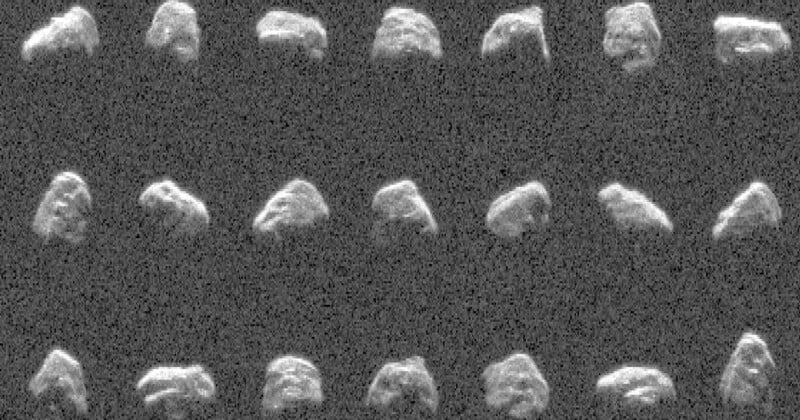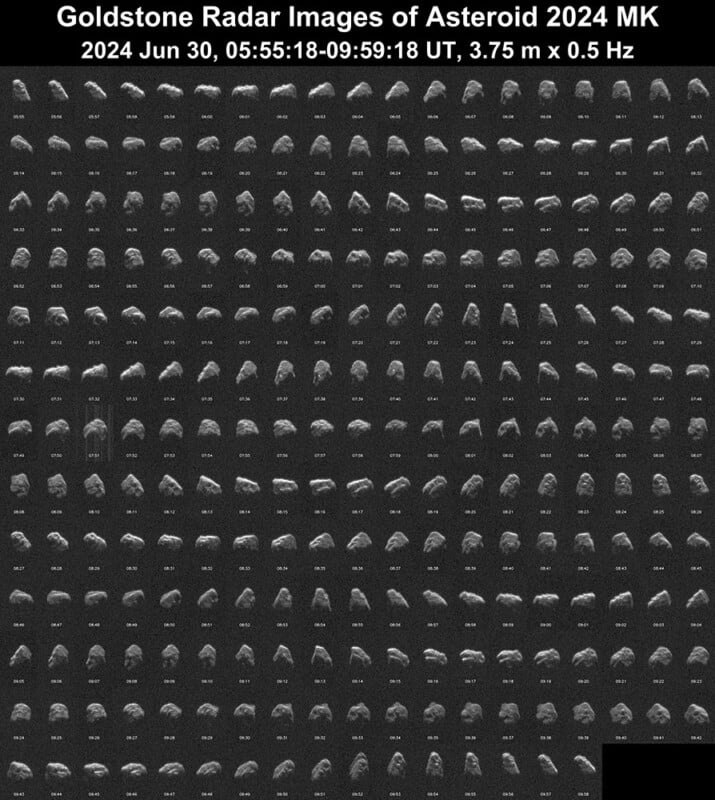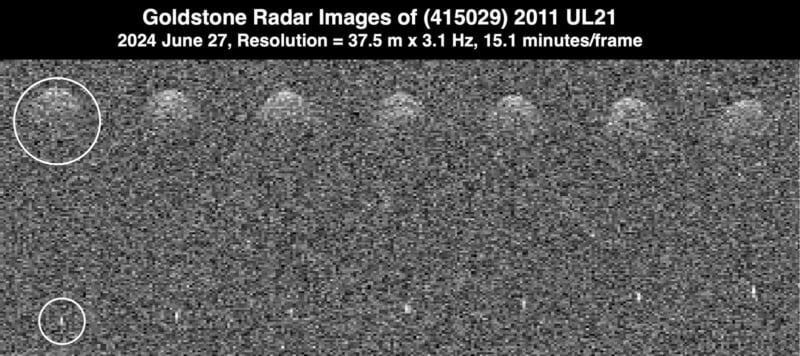
Scientists fret about the possibility of an asteroid hitting Earth with catastrophic consequences, just ask the dinosaurs.
So when not one but two asteroids passed relatively close to home soil last month, it was an opportunity to take a closer look at these potential harbingers of the apocalypse.
NASA used a 230-foot-wide radar system in California to transmit radio waves at the asteroids and received the reflected signals to the same antenna. This mind-blowing technology was able to create an image of what the asteroids look like.
2024 MK
The 2024 MK asteroid passed Earth at a distance of 184,000 miles. That’s less than the distance between the Moon and Earth (about three-quarters).
At 500 feet (150 meters) wide, this medium-sized asteroid has the potential to cause significant damage if it hit Earth.

As its name suggests, the asteroid was first observed this year by the NASA-funded Asteroid Terrestrial-impact Last Alert System (ATLAS) at Sutherland Observing Station in South Africa.
As it passed Earth, the gravitational pull reduced its three-year orbit around the Sun by about 24 days. Calculations of its future travel predict that 2024 MK will not collide with Earth.
![]()
To image 2024 MK (seen in a GIF above), NASA used two different antennas: One to transmit the radio waves and one to receive. This “bistatic” radar observation allowed them to create detailed images of the asteroid’s surface, revealing concavities, ridges, and boulders about 30 feet (10 meters) wide.
2011 UL21
2011 UL21 passed Earth at a far greater distance (4.1 million miles), but that is a good thing because UL21 is almost a mile wide (1.5 kilometers wide) classifying it as a large asteroid that has potentially global consequences if it strikes Earth.
NASA’s radio wave imaging determines that UL21 is roughly spherical and that it has a tiny moon orbiting it from a distance of about 1.9 miles (3 kilometers).

It is believed that the majority of large asteroids are in a binary system like UL21 and the presence of a moonlet may help scientists understand more about how the asteroid formed.
Both asteroids are classed as “potentially hazardous”; generally not thought to be a threat but if something went wrong — like if they collided with an object — they could potentially start hurtling toward Earth.
Image credits:NASA/ JPL-Caltech.
